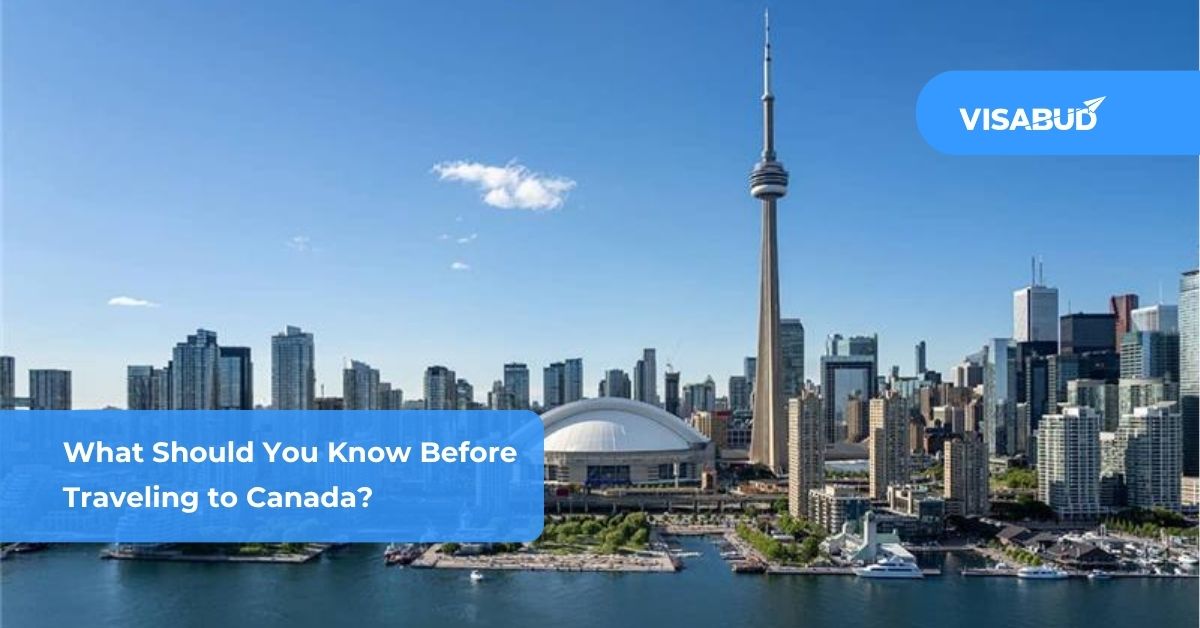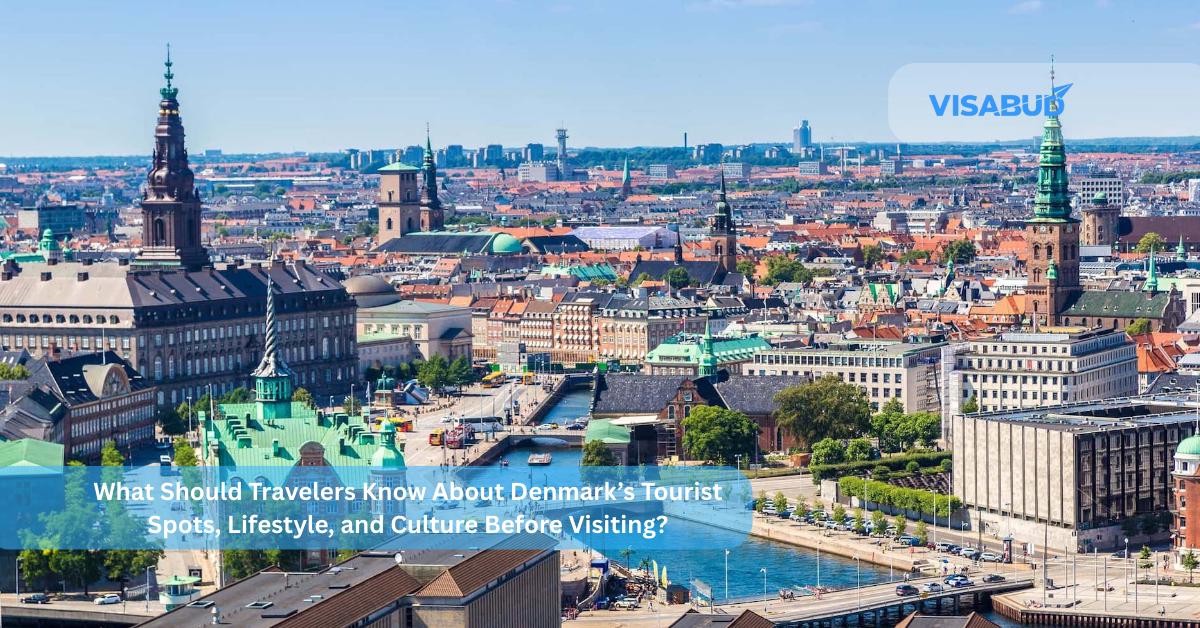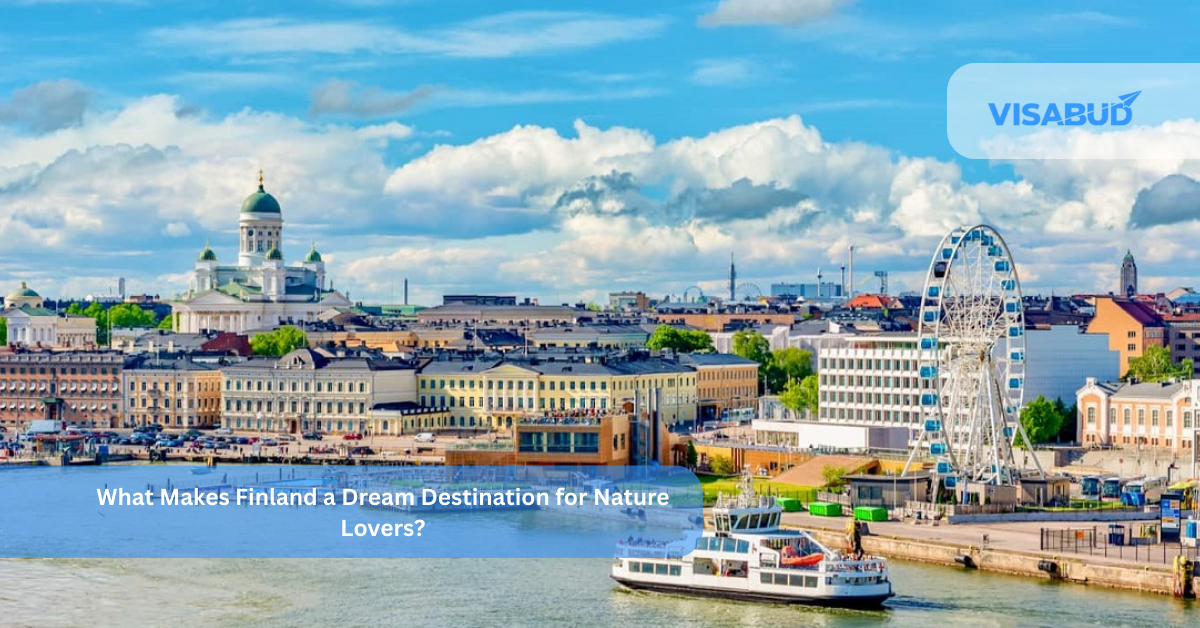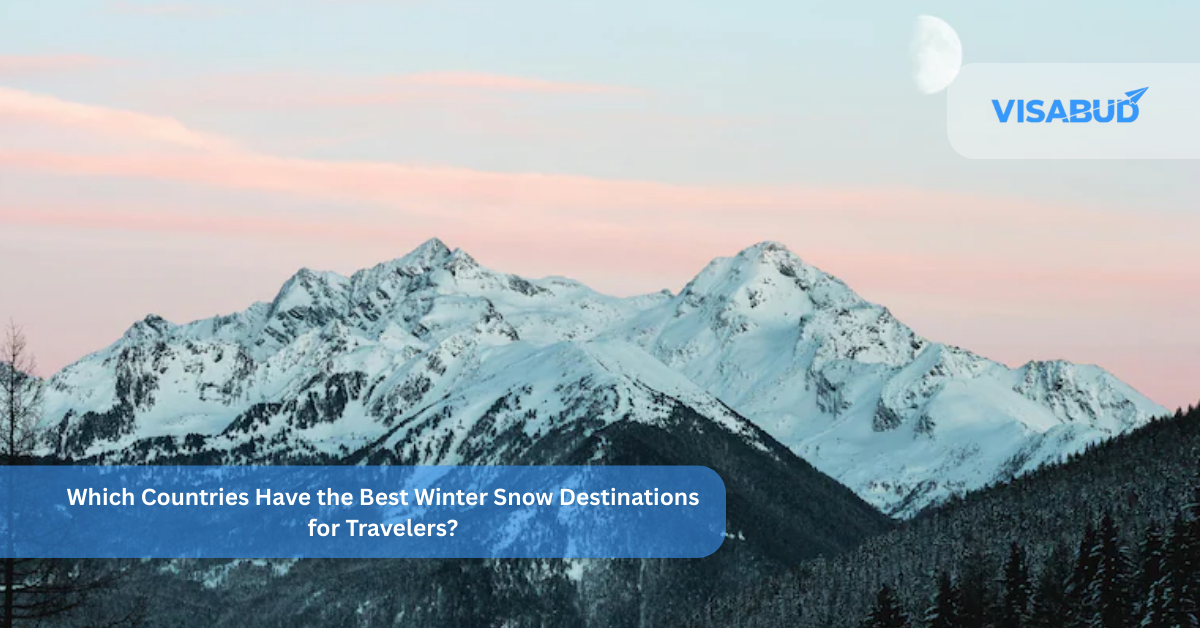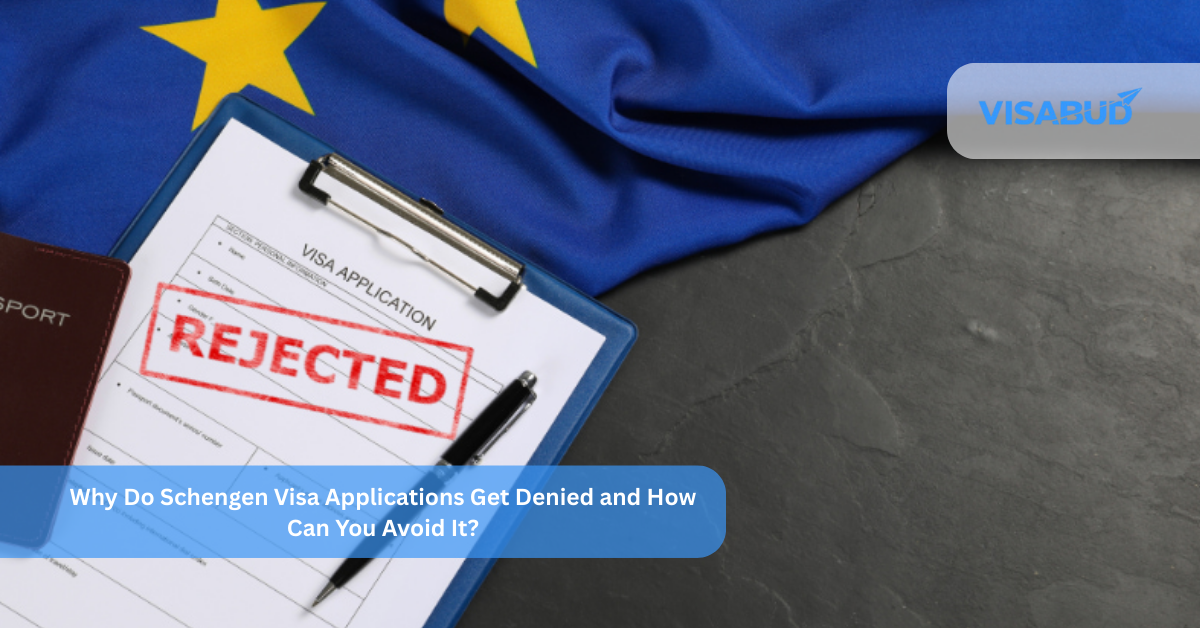🇨🇦 Canada in a Nutshell
Canada stands out as one of the most diverse and traveler-friendly nations on the planet. With its enormous landmass stretching from the Pacific coast to the Atlantic shores and all the way up into the Arctic region, it covers an astonishing range of climates and landscapes. The country consists of ten provinces and three territories, each offering a unique cultural vibe, local traditions, and scenery.
Canada’s multicultural identity is one of its most unique features. The country officially recognizes English and French, with French mainly spoken in Québec, but you’ll hear many other languages thanks to its global immigrant communities. Whether you’re walking through a Chinatown in Vancouver or enjoying Indian cuisine in Toronto, Canada reflects the world within its borders.
The urban centers Toronto, Montreal, Vancouver, Calgary, and Ottawa offer a mix of innovation, art, history, and modern convenience. They’re known for excellent public services, green spaces, and inclusive environments. Yet beyond the city lights lies some of Earth’s most breathtaking natural wonders: majestic mountain ranges, sprawling forests, crystal-clear lakes, and dramatic coastlines.
Travelers are often drawn by iconic sites like Niagara Falls, the Canadian Rockies, and the colorful villages of the Maritimes. Whether you’re an outdoor enthusiast, a culture buff, or simply in need of a peaceful escape, there’s a corner of Canada made for you.
Although Canada is widely regarded as friendly and safe, it’s essential to plan your trip with care. Its sheer size, regional weather differences, and entry formalities mean preparation is key. The more you know before your journey begins, the more rewarding and smooth your experience will be in this stunning northern destination.
Is an eTA Required for Travel to Canada? Here’s What to Know
Planning a trip to Canada? If you’re flying in from a country that doesn’t need a full visa, there’s a good chance you’ll need something called an Electronic Travel Authorization, or eTA. This is a simple digital approval that lets certain international travelers board their flight to Canada.
The eTA isn’t a paper visa and doesn’t require a long process. It’s a quick online form that asks for your passport information, a few personal details, and answers to basic questions about your health and travel history. Once approved, the eTA is linked directly to your passport and stays valid for up to five years, or until your passport runs out whichever comes first.
How and When to Apply for an eTA
You can apply for an eTA through the official Canadian immigration website. The fee is just CAD 7, and most travelers receive approval within minutes. However, processing times can vary especially if the system flags anything unusual. That’s why it’s a good idea to apply at least three days before your departure.
This small step is more important than many travelers realize. Without an approved eTA, you won’t be allowed to board your flight to Canada. Airlines are required to check your travel authorization before you get on the plane.
A Smart Traveler’s Reminder
Before you apply, double-check your passport’s expiration date it should be valid for at least six months beyond your return. And if you renew your passport in the future, remember that you’ll need a new eTA to match the updated document.
In short, think of the eTA as your digital entry ticket quick to get, easy to overlook, but absolutely essential.
Visitor Visa vs. eTA — What’s the Difference?
When planning a trip to Canada, it’s essential to understand whether you need a Visitor Visa or an Electronic Travel Authorization (eTA), as the requirements differ based on your nationality.
Travelers from non-visa-exempt nations must have a visitor visa, often known as a temporary resident visa or TRV. Applying for a visitor visa involves a formal process including submitting various documents such as your travel itinerary, proof of financial support, a valid passport, and possibly a police clearance certificate. Most applicants are also required to provide biometric data (fingerprints and a photo) at a visa application center. The visa must be obtained before entering Canada and is typically stamped into your passport.
On the other hand, an eTA is required for citizens of visa-exempt countries who are flying to or transiting through Canada. It’s a simple online process, often approved within minutes, and linked electronically to your passport. Minimal documentation is required—just basic travel and passport information.
Tip: Never assume which one you need. Check your eligibility on the official IRCC website to avoid delays or travel issues. Whether it’s a visitor visa or an eTA, make sure your documents are in order before booking your flight.
Arrival & Immigration Counters
What to Expect at Canadian Immigration
When you arrive in Canada, your first interaction will be with immigration officers. They will check your documents, ask basic questions, and determine the length of your stay. This process is routine and designed to ensure that travelers meet the entry requirements. Knowing what to expect can make the experience quick and stress-free.
Essential Documents to Present
At the immigration counter, you’ll need to present a valid passport with the appropriate visa or eTA (Electronic Travel Authorization). Officers may also ask to see your return or onward flight ticket, which shows your intent to leave Canada within the permitted time. In addition, you may be required to show proof of accommodation, such as hotel bookings or an invitation letter from a host, and evidence of financial support like bank statements or credit cards. These documents demonstrate that you are prepared for your stay and do not intend to work or overstay illegally.
Questions You May Be Asked
Immigration officers typically ask a few straightforward questions to verify your travel intentions. Common queries include the reason for your visit, the length of your stay, where you’ll be staying, and how you plan to fund your trip. These questions are standard procedure and not meant to intimidate. Just answer honestly and stay calm. Officers are trained to assess responses and documents efficiently.
Tips for a Smooth Experience
To ensure a smooth experience at the border, keep your answers clear, concise, and truthful. Avoid giving overly detailed travel plans, especially if your itinerary is flexible—general answers like “I plan to visit Toronto and maybe explore nearby cities” are acceptable. It’s also important to remain calm and polite throughout the interaction. Immigration officers are simply doing their job to confirm you meet entry requirements.
At the Border: Duration of Stay
Once cleared, you’ll be granted temporary entry into Canada. In most cases, tourists are allowed to stay for up to six months. However, depending on your situation, the officer may issue a Visitor Record, which is a document that outlines specific conditions or a shorter duration of stay. Always review this document carefully and keep it safe during your trip, as it determines how long you are legally permitted to remain in the country.
Declaring Items: What You Must Report
After clearing immigration, you will pass through Canadian customs. Here, it’s essential to declare certain items to avoid fines or complications. This includes food products, animal items, live plants, and currency or monetary instruments exceeding CAD 10,000. You must also declare any duty-free goods that exceed the personal exemption limits. If you’re ever unsure, it’s always best to declare officers will assess the items and let you know if they are permitted.
Getting Around Canada
Navigating Cities and Traveling Between Provinces
Canada is the second-largest country in the world by land area, and getting around can vary greatly depending on your location and how far you’re planning to travel. From modern urban transit systems to cross-country journeys, Canada offers several transportation options that cater to different travel styles and budgets.
From Airport to City Center
Major international airports such as Toronto Pearson (YYZ), Vancouver International (YVR), and Montreal-Trudeau (YUL) are well-equipped to get you into the city without hassle. After landing, travelers can choose from multiple options like airport express buses, city-operated shuttles, taxis, or app-based ride services such as Uber and Lyft. If you’re budget-conscious, public transit systems also run buses and trains directly from most major airports into downtown areas, making them a convenient and affordable choice.
Domestic Flights for Long Distances
Because of Canada’s massive size, flying between provinces is often the most time-saving way to travel long distances. For example, a flight from Toronto to Vancouver takes about 5 hours, whereas driving or taking a train could take days. Airlines such as Air Canada, WestJet, and Porter Airlines offer frequent flights between major cities. While flying may be pricier than other options, booking in advance or using budget carriers can help reduce costs.
Train Travel for Scenic Journeys
Via Rail is Canada’s national passenger rail service and connects cities across the country. While train travel isn’t the fastest method, it offers a scenic and relaxing way to explore Canada’s diverse landscapes especially for routes like Toronto to Quebec City or Vancouver to Jasper. Fares can range from moderate to expensive depending on the class and distance, but sleeper cabins on longer journeys can be a unique experience in themselves.
Buses for Budget-Friendly Travel
Intercity buses remain a practical and cost-effective choice for shorter routes or traveling between small towns. Companies like Greyhound, Megabus, and various regional bus lines offer service between cities and rural destinations. Buses are slower than flights or trains, but they’re ideal for those traveling on a tighter budget or seeking more flexible schedules.
Renting a Car for Flexibility
If you’re someone who loves to explore off the beaten path, renting a car is a great way to enjoy Canada at your own pace. Car rentals are widely available at airports and in major cities. Just keep in mind that driving conditions can vary especially in winter so it’s essential to check road and weather reports before heading out. Be prepared for long stretches of road between towns, particularly in the northern provinces or rural areas.
What Should You Pack for Your Trip to Canada?
Packing for Canada requires a bit of planning, especially because the country is vast and the weather can shift quickly even within the same day. Whether you’re visiting in summer or winter, heading to the mountains or exploring a city, it’s important to pack smart and be prepared for both comfort and unexpected changes in weather.
Clothing: Think Layers and Versatility
When it comes to clothing, the golden rule in Canada is layering. Even if you’re visiting during summer, you’ll notice that mornings and evenings can get surprisingly cool, particularly in coastal or mountainous regions. A typical day might start out sunny and warm, then shift to breezy or rainy by afternoon. Layered outfits allow you to adjust quickly throwing on a hoodie or light jacket when it gets chilly, or removing it when the sun returns.
A waterproof jacket is a must. While snowfall is common in winter, sudden showers can appear year-round, especially in spring and fall. Don’t rely on umbrellas alone many locals prefer lightweight raincoats that offer better mobility during outdoor activities.
Good footwear is just as important. Whether you’re walking through city streets, hiking along nature trails, or simply exploring local parks, comfortable, waterproof walking shoes will keep your feet dry and blister-free. Avoid packing new shoes that haven’t been broken in yet Canada is a place where you’ll want to be on your feet, exploring.
Dress Code: Casual with a Touch of Class
Canadian dress culture is mostly relaxed. In urban areas like Toronto, Vancouver, or Montreal, you’ll see people wearing jeans, T-shirts, and sneakers in most public places. You won’t need formal wear unless you’re attending a specific event. Casual shirts, breathable pants, and lightweight sweaters will fit right in.
However, if you’re planning a special night out like attending a theatre performance, a fine dining experience, or an art gala, packing at least one polished outfit is a good idea. Think smart-casual: a neat shirt with slacks, or a dress with a light cardigan. While Canadians don’t follow strict dress codes, looking well put-together is always appreciated in upscale venues.
If you’re visiting during winter months, don’t forget thermal layers, gloves, scarves, and a proper insulated coat. Winters in many regions can be harsh, and it’s better to be over prepared than underdressed.
Travel Essentials: Don’t Leave Home Without These
Beyond clothing, there are a few key items every traveler to Canada should carry. For starters, adapter plugs are essential if you’re coming from outside North America. Canada uses Type A/B sockets with 120V, 60Hz power. Bringing a universal adapter ensures your phone, camera, or laptop stays charged throughout your trip.
A reusable water bottle is another handy item. Tap water in Canada is safe to drink almost everywhere, and staying hydrated while walking around or during nature outings is important. You’ll also want to pack sunscreen and insect repellent, especially if you plan on spending time in forests, lakeside cabins, or national parks. The sun can be surprisingly strong, and mosquitoes are common in summer near water bodies.
Don’t forget your basic first aid kit. A small pouch with band-aids, antiseptic cream, headache pills, and motion sickness tablets can be a lifesaver on road trips or hikes. If you take prescription medications, carry enough for your entire trip along with a written doctor’s note or prescription copy. This is especially useful in case airport authorities or customs officers need documentation.
Lastly, a foldable daypack or travel bag will come in handy for day trips, shopping, or carrying essentials while sightseeing. You may also want to keep a printed copy of your travel insurance, ID, and accommodation details in case your phone runs out of battery or you don’t have a signal.
Money Matters in Canada
A Tourist’s Guide to Currency, Cards, Cash, and Tipping
Whether you’re visiting the vibrant cities of Toronto and Vancouver or exploring the natural beauty of Banff and Nova Scotia, having a good understanding of how money works in Canada can make your journey a lot smoother. From knowing which currency is used to navigating tipping culture, here’s everything you need to know about handling your finances while traveling in Canada.
The Currency: Canadian Dollar (CAD)
The official currency in Canada is the Canadian Dollar, commonly abbreviated as CAD or symbolized as $. It’s often referred to as the “loonie” due to the image of a loon on the one-dollar coin. Other coins include the two-dollar coin (called a “toonie”), quarters (25 cents), dimes (10 cents), nickels (5 cents), and pennies, although the penny is no longer in circulation you’ll see prices rounded to the nearest five cents for cash transactions.
Before you land in Canada, it’s a good idea to familiarize yourself with these coins and notes to avoid any confusion when making small purchases or using public transport.
Credit & Debit Cards: Your Best Friend for Daily Transactions
Credit and debit cards are accepted almost everywhere in Canada. Visa and Mastercard are the most widely accepted cards, and many places also support American Express and Interac (a Canadian debit network). Whether you’re dining at a fancy restaurant or buying coffee at a corner café, swiping or tapping your card is the norm.
If your card supports contactless (tap-to-pay) features, you’ll find that many businesses from taxis to convenience stores are equipped to accept it. Digital wallets like Apple Pay and Google Pay are also increasingly common.
Before you travel, check with your bank or card issuer to understand any foreign transaction fees that may apply. Some credit cards charge 2–3% per transaction, which can add up over a long stay.
Carrying Cash: Still Useful in Certain Situations
Although Canada leans heavily towards cashless payments, carrying a small amount of physical currency, say around CAD 20 to 50 can be very handy. Small businesses, farmers’ markets, street food vendors, and rural service providers may still prefer cash or offer better prices for cash transactions.
It’s also useful for tipping hotel staff, using public transit in smaller towns, or buying from roadside stands. Try not to carry large sums unless absolutely necessary, and keep any cash securely stored in a money belt or hotel safe.
Using ATMs: Know Before You Withdraw
ATMs in Canada are known locally as ABMs (Automated Banking Machines) and are widely available in banks, malls, airports, gas stations, and convenience stores. Withdrawing Canadian dollars using your foreign debit or credit card is usually simple, but do be aware that international withdrawals often come with bank fees.
These can include a flat fee from the Canadian ATM provider and a currency conversion or foreign transaction charge from your home bank. It’s wise to withdraw larger amounts less frequently to minimize fees, but avoid taking out too much at once due to safety concerns.
Additionally, some vendors and businesses may charge surcharges for credit card payments, particularly for small-ticket items or services. Always check the terminal screen before confirming a card payment and ask if there’s an extra charge.
Tipping in Canada: A Sign of Courtesy
Tipping is a well-established custom in Canada and is considered a part of good service etiquette. While some hotels and upscale restaurants include service charges, in most casual situations, you are expected to tip separately.
Here are the standard tipping practices you should be aware of:
Remember, tipping in Canada is not mandatory by law, but it’s an important cultural norm that reflects appreciation for good service. Failing to tip where it’s customary might come off as rude or inconsiderate.
Healthcare & Travel Insurance for Tourists in Canada
While Canada is known for its excellent universal healthcare system, it’s important to understand that this service is only available to Canadian citizens and permanent residents. Tourists and short-term visitors are not covered under this system. If you fall sick or face a medical emergency during your trip, you will need to pay out of pocket, and healthcare in Canada can be expensive without coverage. That’s why purchasing comprehensive travel insurance before you arrive is not just recommended, it’s essential. Good travel insurance should cover emergency medical care, hospital visits, ambulance services, and prescription medications. In case of an accident or sudden illness, having coverage ensures you won’t face unexpected financial stress. Though Canadian hospitals and clinics do provide care to foreigners, they will bill you directly unless you’re insured. Always travel protected, it’s a small investment for peace of mind while exploring Canada.
Travel Smart: Safety & Practical Tips for Visiting Canada
Your Simple Guide to Feeling Confident, Informed, and Prepared
Traveling to Canada offers an exciting blend of city charm and wild landscapes. While the country is known for its welcoming environment and safe surroundings, understanding how to navigate common travel situations makes your experience smoother and more enjoyable. Here’s a fresh take on the key things you should know before arriving.
Personal Safety: Calm and Confident in Canadian Cities
Canada is widely regarded as a peaceful and secure place to visit. Violent crime is uncommon, and locals are generally respectful and helpful toward tourists. But just like in any popular destination, it’s smart to stay aware, especially in crowded spaces or late at night.
Stick to public areas that are well-lit after dark, and avoid walking alone in unfamiliar neighborhoods. Don’t leave valuables unattended—use bags with zippers and keep your phone, wallet, and travel documents within reach. If you’re using public transport, be alert and try not to flash expensive items.
These simple habits can prevent minor problems and help you feel confident while exploring.
Nature Watch: How to Stay Safe Outdoors
One of Canada’s biggest attractions is its stunning nature forests, lakes, and mountains stretch for miles. But with natural beauty comes wildlife. In some regions, especially in British Columbia, Alberta, and parts of Ontario, you may come across wild animals like bears, moose, or even coyotes.
To stay safe, never leave food or scented products unattended when camping or hiking. Animals can be drawn to smells from even toothpaste or snacks. Most national parks provide guidelines read and follow them closely.
Avoid getting close to any wild animal. Even if they seem calm, they can act unpredictably, especially when protecting their young. If you’re hiking, making gentle noise as you walk can help alert animals so they stay away.
Know the Local Laws: Respect Canada’s Rules
Canada’s rules might feel different from what you’re used to. For example, the legal age to drink alcohol is 18 or 19, depending on which province you’re in. You’ll need an official ID to purchase or consume alcohol, and drinking in public is generally not allowed.
Cannabis is also legal in Canada for adults, but how it’s used is regulated by each province. Some places allow it in public spaces, others restrict it to private property. If you plan to use it, always check the local laws first.
Driving after consuming alcohol or cannabis is a serious offense. Canada enforces strict rules for impaired driving being even slightly over the limit can lead to heavy fines or even arrest. When in doubt, use public transport or ride-sharing apps like Uber or Lyft.
Staying Connected: Avoiding Data Surprises
Using international roaming in Canada can be pricey. If you want to stay online without racking up unexpected charges, consider buying a local prepaid SIM card. These are available at most mobile stores and some airports, offering short-term data plans perfect for tourists.
Another great option is using a Wi-Fi device or mobile hotspot if you’re traveling as a group. This lets several devices connect at once using a single data plan. For solo travelers, data-only SIMs are ideal for browsing, maps, or using messaging apps.
It’s also smart to download key tools like maps or translation apps before heading to rural or remote areas where signals may be weak.
Best Time to Visit Canada: What to Know Before You Plan
Canada is a country of four distinct seasons, and the best time to visit depends on what kind of experience you’re seeking. Summer (June to August) is lively and energetic, especially in cities like Toronto, Vancouver, and Montreal. It’s also the peak season for visiting national parks, lakes, and mountain trails. However, with popularity comes higher prices and larger crowds.
Autumn (September to October) offers vibrant fall colors, especially in places like Algonquin Park and the Laurentians. This is a fantastic time for fewer tourists and beautiful crisp weather, perfect for hiking and photography. Winter (December to February) is cold, but if you’re into snow sports like skiing, ice skating, or just enjoying magical Christmas markets, you’ll love it. For those preferring a quiet, budget-friendly time, spring (April to May) is ideal. Nature comes back to life, flowers bloom, and cities slowly warm up though some areas remain chilly through May.
Where to Stay: Accommodation Styles and Smart Booking Tips
Canada has a wide range of accommodations to suit every traveler. Hotels and resorts are plentiful across major cities and rural retreats like the Rockies. If you’re road-tripping, motels offer budget-friendly, easy-to-access options. For a more intimate, local experience, bed and breakfasts are cozy and often run by welcoming hosts in small towns. Hostels are great for backpackers or solo travelers seeking community on a budget. If you’re staying longer or traveling with family, vacation rentals like Airbnb provide space, privacy, and kitchen facilities.
Booking in July and August requires early reservations due to high demand. If traveling in spring or fall, you’ll find better deals and more availability. Always read the latest reviews especially for amenities like heating, parking, Wi-Fi, and flexible cancellations.
Canadian Food & Dining Culture: What to Taste and Expect
Canada’s cuisine is incredibly diverse. Be sure to try poutine, a dish of French fries topped with cheese curds and gravy, available everywhere. Maple syrup, often fresh from farms in Quebec, is iconic. Indigenous food like bannock offers a traditional twist, while sweet lovers must sample butter tarts and Nanaimo bars. Seafood, especially in the Atlantic provinces, is fresh and flavorful, from lobster to mussels.
Dining out? In big cities, it’s wise to book reservations for popular spots. Tipping is standard around 15% to 20%. Try seasonal or regional specialties when available, and don’t hesitate to ask locals for their favorites.
Top Places to Visit: Cities, Nature, and Hidden Gems
Canada’s cities are world-class. Toronto offers skyline views from the CN Tower, a thriving multicultural food scene, and vibrant neighborhoods. Vancouver sits between mountains and ocean, ideal for both urban exploring and nature escapes. Montreal combines French flair with a dynamic arts scene, and Quebec City feels like a walk through Europe with cobblestone streets and historic forts. Calgary is the gateway to the Rockies and bursts with Western charm.
In nature, Niagara Falls remains a must-see. The Rocky Mountains especially Banff and Jasper are filled with turquoise lakes and scenic trails. Whistler is famous for winter sports, while Prince Edward Island offers quiet beaches and seafood. Explore the coastal beauty of Nova Scotia and Newfoundland for maritime magic.
Looking for something different? Tofino on Vancouver Island is known for surfing and whale watching. Tadoussac in Quebec is a great whale-watching spot too. Manitoulin Island is peaceful and perfect for kayaking, and the Capilano Suspension Bridge in Vancouver delivers mid-city thrills surrounded by forest.
Shopping & Taxes: What to Know
Canada has a wide range of souvenirs from maple syrup and moose-shaped trinkets to Indigenous crafts and smoked salmon. Duty-free shops are located at airports and land borders, but there are limits on what you can bring. GST/HST (sales tax) is usually added at checkout. Most tourists cannot claim tax refunds, though when buying from First Nations artisans, you may be exempt just ask at the time of purchase.
Staying Connected: SIM, Wi-Fi & Emergencies
Major SIM providers include Bell, Rogers, Telus, and Freedom Mobile. Many offer tourist data plans from around CAD 30/day. eSIM is gaining popularity check if your phone supports it. Free Wi-Fi is common in malls, hotels, and cafés, but coverage may vary in remote areas.To contact the police, ambulance, or fire department in an emergency, dial 911. Keep in mind that coverage can be limited outside urban zones.
Eco-Conscious Travel in Canada
Canada values its natural spaces. Be a responsible visitor by packing reusable water bottles, cutlery, and shopping bags. In parks, always follow the “leave no trace” principle carry out whatever you carry in. Support local communities by booking eco-lodges or joining guided cultural tours offered by Indigenous businesses.
Getting around? Opt for public transport in cities or rent a bike. Apps like Uber, Lyft, and local bike-share services are available in most urban centers.
Who Canada Is Great For: Travel Styles
Families will find child-friendly museums, aquariums, and playgrounds almost everywhere. National parks offer junior ranger programs and easy hiking trails.
Solo travelers will enjoy the safety and hospitality Canada is known for. Public transport is reliable, and hostels and local tours are great for meeting people.
Millennials and young adults can dive into dynamic nightlife, thriving café scenes, pop-up festivals, and easy access to hiking or kayaking adventures.
Must-Have Travel Apps
Download apps like IRCC (for visa and immigration info), ArriveCAN, Google Maps, and CityMapper. The Parks Canada app is perfect for hiking and wildlife alerts. For local rentals or tickets, try Kijiji or Facebook Marketplace. Need real-time exchange? Use XE Currency. Planning hikes? AllTrails offers user-reviewed trails by difficulty and terrain.
Frequently Asked Questions (FAQs)
1. Do I need a visa or just an eTA to visit Canada?
It depends on your nationality. Indian citizens, for example, need a visitor visa. Some travelers only need an eTA if flying in.
2. How much money should I show for proof of funds?
There’s no fixed amount, but CAD 100–150 per day of stay is generally considered sufficient.
3. Is it safe to travel alone in Canada?
Yes, Canada is considered one of the safest countries for solo travelers, including women. Cities have good infrastructure and support systems.
4. Are there any tax refunds for tourists?
Canada discontinued its national tourist tax refund program. However, some exemptions may apply to First Nations purchases.
5. When is the best time to see fall foliage in Canada?
Late September to mid-October is peak time for fall colors, especially in Ontario, Quebec, and the eastern provinces.
Final Travel Tips Before You Go
Apply for your visa or eTA well in advance. Pack clothing for mixed weather, especially if traveling in spring or fall. Always buy travel insurance. It’s essential in case of delays, illness, or cancellations. Call 911 for emergencies. Exploring Canadian food and culture deeply it’s worth the curiosity. Be kind to wildlife and respect Indigenous communities and customs. And finally, don’t be surprised if a stranger strikes up a friendly chat. It’s the Canadian way.
